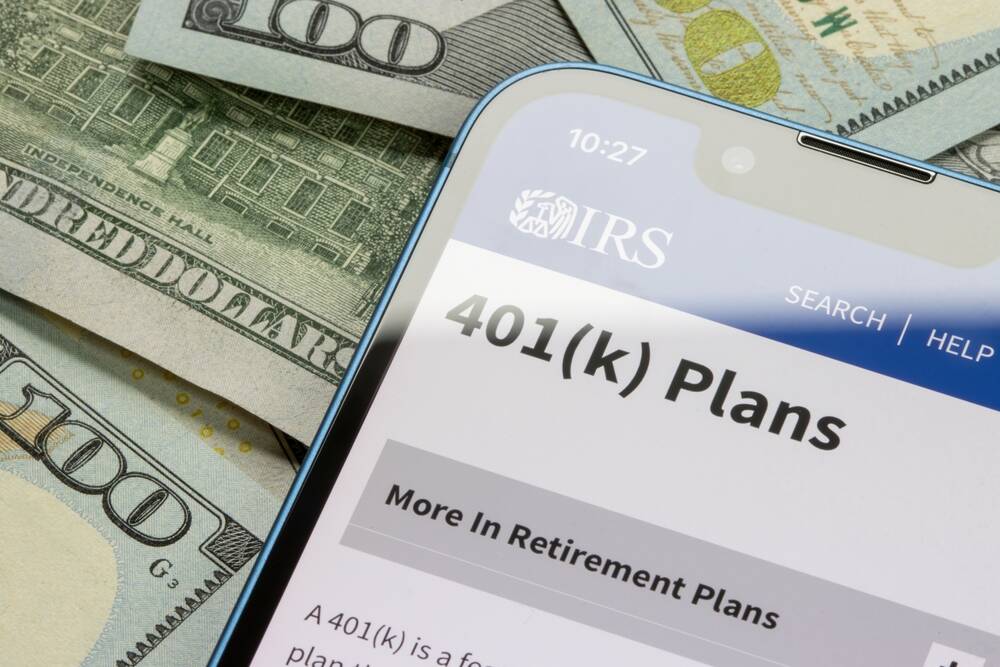Are You 55 With No Retirement Savings? Here Is What To Do!
Saving for retirement is the most effective and has a greater impact on the earlier you begin. The more you wait, the harder will get. But don’t worry! There are still some available options for you and we will describe them in this article.
In case you are dreaming of a particular lifestyle as a retiree but have ZERO savings, you will most likely end up disappointed. What should you do? First, you need to establish an effective plan and strictly follow it. It can be overwhelming and we recommend finding a financial planner or advisor to help you create an ideal and personalized plan for your situation.

1. Calculate Your Expected Retirement Spending
In case you want to ensure a comfortable and safe retirement you should start estimating retirement spending to avoid sudden drastic spending cuts in both essential and non-essential spending. You don’t want to arrive in the position of outliving your savings, which is why it’s important to prevent as many situations as you can that can put your financial stability in danger.
Make a retirement budget to avoid overspending and see exactly where your money is going. Start with the largest expenses (usually, these are housing and healthcare), then carefully check which are the non-essential areas you can cut some spending from.
In case you find yourself in a situation where your expenses are higher than your income, you should consider moving and, basically, downsizing your home. Even though the entire process is not easy and requires a little effort, it’s totally worth it if, at the end of the month, you’ll still have some extra money in your account.
Another thing you can do, in case you don’t want to move, is rent a part of your home, for a temporary period or the long term, depending on your wishes
Last but not least, you can also consider moving to an all-inclusive retirement community.
Keep in mind, that the more cuts you will make the easier will be when you’ll retire with zero money at the bank.

2. Fund Your 401(k) to the Max
401(k) offers you potential investment growth over time and also, provides a framework for saving. So, if you maximize your contributions you can bridge the gap between your current savings and the ideal financial cushion, you’ll need to pay for your retirement.
The best way to benefit from 401(k) is by reducing discretionary expenses or increasing income streams. The goal would be to free up more funds for allocation to your 401(k). Another trick that can help you ensure consistent savings, without the need for manual transfers, would be to automatize contributions to coincide with pay periods.
Defined contribution plans are a great way to save for retirement. For example, you can contribute up to $23,000 (for 2024) and make an additional $7,500 per year which is not bad!
3. Open an IRA and Fund It
Opening an individual retirement account (IRA) is another way to boost your retirement savings. This kind of account can provide significant opportunities for retirement investments. The process can be initiated with a variety of financial institutions and requires some important steps, such as: selecting a provider, providing personal identification, establishing a funding source, and choosing your investments. The process is very simple, all you need to do is carefully think about what you are going to invest in, considering your special financial situation.
For 2024, you can save up to $7,000 in an IRA and an additional $1,000 if you are older than 50. These are the 2 primary types of IRAs:
- Traditional IRA – funded with pre-tax contributions and there are no income limits to participate.
- Roth IRA – funded with contributions made with after-tax dollars and there are income limits to participate.
4. Utilize Catch-Up Contributions
Remember that if you are 50 years old or even older, catch-up contributions are a game-changer!
You can contribute additional funds to your retirement account, without limits, accelerating your retirement growth. To be eligible, you need to be 50 or older by the end of the calendar year. Keep in mind that by contributing an additional $7,500 to your 401(k) for more than 10 years, you could have a 5% annual return, which means around $111,000 added to your retirement fund.

5. Calculate How Much You Will Receive from Social Security
Knowing how much money you can get from Social Security is important if you are trying to retire with zero money saved. In August 2024, the national average monthly benefit was $1,920.48. Of course, the amount varies, because several essential factors must be considered, such as employment and earning history, but also the age at which you retire.
You can start receiving Social Security once you are 62 years old, and not earlier. Remember that if you delay benefits by the age of 70 you can claim a significantly increased amount. So, in case you have zero savings it might be a good idea to wait as much as you can before claiming your benefits. Calculate your estimated retirement benefits and you will find the perfect timing to apply for Social Security. You can also consult a professional to get a better picture of your situation.
6. Think About a Smart Investment for the Next 10 Years
Do you want to build wealth over an extended period? Once you start saving, make sure you invest a part of the gained money. Real investments are not based on quick gains through frequent trading. Even though is not that easy to make a good investment plan, once you do it right. It’s totally worth it! Experts say that sectors such as technology, healthcare, or renewable energy have strong potential for the future.
Here are some investment options for retirement:
- contributing to a 401(k) at work
- investing through a taxable brokerage account
- purchasing real estate as an investment property
- get a regular income stream by buying an annuity
Remember that no matter the kind of investment, each one represents a risk. So, before making a decision consider your risk tolerance and goals.
The Bottom Line
Retirement without any savings can be hard to handle and can affect not only our lifestyles but also our mental health. So, in case you are retiring soon, but don’t have any savings, you should consider a semi-retired lifestyle and search for a part-time job. We know, you are just tired of a 9 to 5 program and all you need is take some rest.
You’ll see that once you spend most of your time at home, you will get bored and want to find new hobbies or things to do. Don’t let the time pass by and start searching for a part-time job before becoming officially a retiree. This way, you will prevent forming a financial gap and the transition from work-life to a new stage in life will be also smoother.
Here are some part-time jobs for retirees with no degree required, you should take into consideration:
- Real estate agent
- School bus driver
- Security guard
- Tutor
- Nanny
- Pet Groomer
If you don’t know what to expect from retirement. We recommend you purchase this book. It can be found on Amazon and it’s called: “Retiring? Your Next Chapter Is About Much More Than Money”. Retirement triggers profound changes and not everything should be about money. Living life, relationships with friends and family, and even your identity will suffer significant changes. How to handle everything? Find out by reading the book.
Are you interested in learning more about this topic? You should also read: Best and Worst States to Retire With Minimum Savings.








